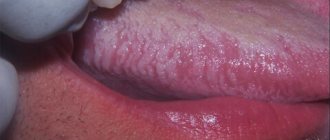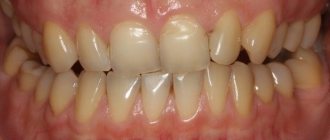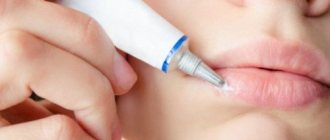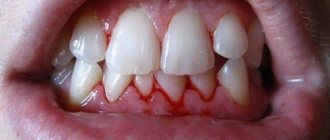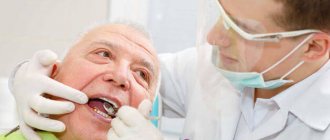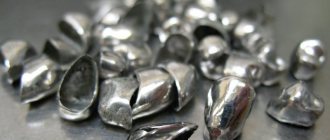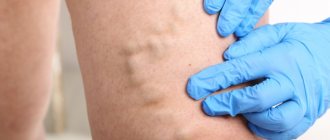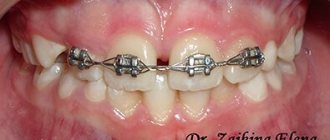December 5, 2020
Most infections are caused by streptococci and staphylococci. They live in the environment, inhabiting the skin, mucous membranes of the mouth, nose, and genitals. In 9–12% of cases, inflammation is provoked by corynebacteria, leprosy bacilli, tuberculosis, and campylobacter.
Healthy skin keeps germs out. This is prevented by the structure of the epidermis, the pH of sweat and sebum, and the antiseptic properties of the secretion of the sebaceous glands. When protection is violated, pustular rashes occur.
Superficial bacterial skin infections
Folliculitis
- inflammation of the hair follicle: abscess around the hair, redness of the surrounding area.
Pemphigus of newborns
- a severe contagious disease when inflammatory blisters cover the baby’s entire body, forming crusts and ulcers.
Impetigo
- against the background of redness, painless blisters with cloudy contents appear. Then the blisters shrink to yellowish crusts, leaving erosions.
Impetigo often occurs in children and young women. Localization: face, under the hair of the head, limbs. When staphylococcus attaches, the crusts become greenish or bloody. The disease spreads quickly in communities. If you suspect it, you need to isolate the child and bandage the wound.
Bacterial infection of the deep layer of skin
Occurs when microbes enter deep into the dermis.
Furuncle
First, a painful node appears, then an abscess matures in its center. After 5–7 days it opens, a purulent-necrotic core is released, and the wound is scarred. When there is more than one lesion, they speak of furunculosis.
Carbuncle
These are several boils united into a common infiltrate. The place looks like a purple-bluish tumor. Pain increases, well-being suffers, body temperature rises. After opening the formation, a deep ulcer remains, healing with a scar.
Acne (blackheads)
- inflammation of the sebaceous gland ducts due to blockage. Pustules form on the face, chest, and shoulders. Their contents dry out to crusts, after which, when rejected, scars or bluish spots remain.
Hidradenitis
Purulent inflammation of the sweat glands. The process often recurs. Favorite localizations are armpits, inguinal folds, under the mammary glands. Deep painful nodes appear, bluish-red on the outside. They are opened with the separation of liquid pus.
Erysipelas
Occurs in people who are individually predisposed. Foci of inflammation are clearly limited. The affected area is swollen, hot, bright red, with bursting blisters. The disease is accompanied by fever, intoxication, and severe pain.
Deep pyoderma can be complicated by inflammation of the lymphatic vessels and nodes, abscess, and sepsis.
Bedsores
Bedsores are formed as a result of constant compression of soft tissues. Simply put, when a person lies in one position for a long time, some parts of the body are constantly compressed. Blood circulation and nutrition are disrupted, soft tissues begin to slowly die. This is called soft tissue necrosis.
Important The process of bedsore formation “starts” after just two hours of body immobility!
Bedsores are characterized by a change in skin color with clear boundaries, swelling, and weeping wounds. If they are not treated promptly, the volume and depth of the lesions rapidly increase. Most often, bedsores occur on the heels, knees, elbows, tailbone, and buttocks. It depends on what position the person predominantly lies in.
There are 4 stages of development of bedsores .
Stage 1. Fading redness
What does it look like:
A pale area of skin or, conversely, persistent redness. The skin is not damaged. If you press your finger into the center of the redness area, the skin will turn pale. This suggests that microcirculation is not impaired.
Stage 1 bedsore on the back. Photo: CPP
Stage 1 bedsore. Photo: ECDO Center
To be sick, but to smile is the norm. Alexey Vasikov, director of the Blacksmith Lobov House of Mercy, about what “norm” means for a seriously ill person and why it sometimes surprises us
Alexey Vasikov
About palliative care
How to treat
It is important to prevent the process of bedsore formation from developing further. Make sure that the person does not lie on the injured area, use protective film breathable bandages (like a “second skin”).
By the way, in this article we describe in detail what types of dressings there are and in what cases what to use.
You can lightly massage healthy skin around the redness area - stroke it clockwise. It is permissible to use activating agents for massage. They improve blood microcirculation in tissues, which leads to improved metabolic processes in tissues, and therefore to an improvement in their condition and increased resistance to negative factors.
These products include special creams and gels with camphor or guarana. But remember, under no circumstances should you use camphor alcohol.
and similar means.
This article will help you understand the variety of foams, dry shampoos, creams and lotions for hygiene, including in special cases - bedsores, stoma, urinary and fecal incontinence.
Stage 2. Non-fading redness
What it looks like: Skin color - bluish-red, spots with clear edges; skin with superficial damage - abrasions, blisters. Usually already accompanied by pain.
Stage 1 bedsore. Photo: Palliative Care Center, Moscow
Stage 2 bedsore. Photo: Palliative Care Center, Moscow
How to deal with unpleasant odors in the home of a seriously ill person Why do unpleasant odors form, is there a specific “smell of old age” and how to deal with this problem
Kristina Osotova
Care
How to treat
It is necessary to prevent the wound from becoming infected. It should be rinsed with sterile saline at room temperature, and then a transparent semi-permeable film, hydrocolloid or foam dressing should be applied. To prevent the formation of bedsores from developing further, follow all anti-bedsore procedures.
Stage 3. Damage to the skin up to the muscle layer or with penetration into the muscles
What it looks like: The edges of the wound are well demarcated, surrounded by swelling and redness; the inside of the wound may be yellow or red. This is necrosis (tissue death) or granulation (tissue growth around). There may be liquid discharge. Hurts a lot.
Stage 2 bedsore. Photo: Palliative Care Center, Moscow
Stage 3 bedsore. Photo: Palliative Care Center, Moscow
Video: Treatment of deep bedsoresWhat to do and how to care if a person has deep bedsores and you do not have the opportunity to see a doctor
Irina ProkopenkoCaring workshop
Care
How to treat
Stage 3 bedsores should only be treated by a doctor. It will cleanse the wound of exudate (liquid that is released from small blood vessels during inflammation) and pus. He will remove necrotic (dead) tissue surgically or dissolve necrosis using special gel dressings, and wash the wounds with saline solution. For secondary infection and purulent discharge, he will prescribe antibacterial agents (for example, metronidazole).
It is important to ensure the absorption of discharge and protect the wound from drying out and infection. For this, atraumatic bactericidal and absorbent dressings are used: based on beeswax with bactericidal properties, hydrogel, based on calcium alginate. They may also have a hemostatic effect.
After cleansing the wound, you need to stimulate its healing process. And, of course, continue all necessary anti-bedsore procedures.
Stage 4. Damage to all soft tissues, tendons and bones visible
What it looks like : Many holes are formed that can connect. The bottom of the wound often fills with black or black-brown masses of decaying tissue. Very strong, unbearable pain.
Stage 4 bedsore. Photo: Palliative Care Center, Moscow
Last stage bedsore, tissue necrosis. Photo: ECDO Center
How to treat
Such bedsores can also only be treated by a doctor. It does the same thing as stage 3 pressure ulcers, plus adds prophylaxis and bleeding control if necessary. For this purpose, atraumatic dressings are used and locally - a solution of ethamsylate and aminocaproic acid, calcium alginate.
Important Sometimes bedsores form in very unexpected places - for example, on the head. Read about this in the article “Bedsores on the head: prevention and treatment.”
Bedsores. Test for those caring for seriously ill people Do you know enough about caring for a sedentary person? Test your knowledge. Caring workshop
Symptomatic treatment
Features of facial skin infections
The blood supply to the organs of the head, face, and membranes of the brain is closely connected. Incorrect treatment and squeezing of pimples is dangerous due to the spread of bacteria through the blood and lymph. You can achieve an increase in the area of the affected area, such dangerous complications as meningitis, abscesses and phlegmon, and inflammation of the eyes.
Before deciding on cosmetic procedures - cleansing, peeling, mesotherapy - undergo an examination by a dermatologist to determine the cause of the pustular rash and receive treatment.
How to prevent acne and post-acne
To prevent acne and the development of post-acne, you must follow the rules of face and body care. It is important to use cleansing and skin care products selected for your age and skin type, and use them only for their intended purpose and according to the instructions.
Do not squeeze blackheads or white pimples.
To speed up their healing, you can use special creams, serums or other targeted products. If acne does not go away or its number increases, a visit to a dermatologist is necessary.
To protect your skin from inflammation, try not to touch your face or rub it with your hands during the day; if you talk on the phone a lot, treat your gadget, as there are always a lot of bacteria on it that get on the skin.
Change your towels more often or ditch them in favor of disposable paper towels. Be sure to wash your face twice a day and take a shower. For washing, you need to choose mild cleansers. If you are prone to acne, you need a soft, delicate and well-cleansing cosmetic product. Regular soap or shower gel may be too harsh.
Treatment of bacterial skin infections
It should start from the early stages and be carried out under the supervision of a specialist. In some cases, local treatment with antibacterial ointments and wiping with antiseptics is sufficient. Widespread rashes, deep pyoderma, require the prescription of systemic antibiotics. In chronic cases, the doctor may recommend autohemotherapy and immune drugs.
Surgical treatment is carried out if the abscess does not open on its own or if a rough scar must be avoided. Laser coagulation and physiotherapy are used to restore tissue.
It is important to identify and treat concomitant diseases, eliminate adverse external effects on the skin, and select nutrition.
Prevention
Observe the following rules:
- After visiting the gym, wipe the areas that came into contact with the equipment with an antiseptic.
- Treat cuts and wounds with antibacterial drugs (iodine, salicylic alcohol, hydrogen peroxide) immediately after they occur.
- Do not share hygiene items or cosmetics with other people.
- Places of abscesses and impetigo should not be washed with water, combed, or pressed.
- Avoid spicy fatty foods and sweets.
Make an appointment with a dermatologist on time.
The doctor will help you identify the cause of the inflammation, do the necessary tests, and select a treatment that suits the type and stage of pyoderma. December 5, 2020
Author of the article: dermatologist Mak Vladimir Fedorovich
Facial rashes: how to control them
If you have ever suffered from acne, you will no longer be careless in choosing cosmetics. One word “comedogenic” and the cream is forgotten forever. Regular struggle with blackheads - closed comedones, but before dates or important meetings, as luck would have it, an unpleasant surprise always pops up, and on critical days, pimples are generally a common thing.
There are a lot of remedies in your arsenal: pharmacy, cosmetic, folk remedies, but none of them eliminates the symptoms once and for all. Your friends advise you to take nutritional supplements and go to the solarium; you are frantically looking for a sane cosmetologist who can prolong the unstable remission. Is acne really never going to be cured?
This is wrong. Acne can be treated quite successfully. If you have a severe or moderate form of the disease (“moderate” acne), consult a cosmetologist, preferably a cosmetologist-dermatologist. Now there are many professional anti-acne lines. Be prepared for long-term treatment with uneven dynamics: after 2-3 sessions, temporary deterioration is possible, but this does not mean that the therapy was chosen incorrectly. You may be offered a combination of external therapy and tablets.
Dermatologists' methods will be stricter. There is a protocol (systematically developed recommendations) for treatment - this is a combination therapy: external agents and tetracycline antibiotics for several months. In my opinion, this option should be chosen only in severe cases, when there are multiple inflamed pustules, cystic formations, nodes, etc.
If you are past this stage and just want to control your breakouts, read on.
On store shelves there are a lot of products for home care for acne-prone skin. Every cosmetic company – no matter whether it is large, professional or “organic” – produces natural, organic products and has a special line for problem skin. Let's figure out how not to get lost in the variety of anti-acne products.
The four most common myths about the composition of cosmetic products:
Myth No. 1: Cosmetics are safe if they are labeled “non-comedogenic” or “non-acnegenic.”
The label “non-comedogenic” means that the product does not provoke the appearance of non-inflammatory open or closed comedones, known as blackheads and bumps/irregularities of the skin.
The term “comedogenicity” is not confirmed by law; it was invented by marketers to make cosmetic lines for minimizing and controlling acne seem reasonable, that is, to increase sales. But still, if a developer makes statements about the “non-comedogenicity” of his product, he is obliged to somehow confirm them.
In the best case scenario, the manufacturer tests its composition on the backs of volunteers whose skin is prone to clogged pores. If a cosmetic product does not increase the number of comedones, it is labeled as “non-comedogenic.”
For me, this is a very questionable study, primarily because the sebaceous glands of different locations have an unequal number of receptors that increase the production of sebum, which leads to comedones. Nevertheless, even such tests are still a plus, since an attempt is made to at least somehow substantiate the result. Basically, manufacturers simply quote the List of Non-Comedogenic Substances created by Dr. Kligman (who discovered cosmeceuticals for us) back in 1979, that is, there are no tests, just a naked theory.
The situation with tests for “acnegenicity” is approximately the same - they are very conditional.
Therefore, labels should not be trusted 100%. Myth No. 2. Mineral oil is comedogenic.
Many people believe that blackheads appear on them precisely because of the mineral oil included in the cosmetic product.
It is found in every second product, especially often in decorative cosmetics. Such statements are based on research from many years ago. Today there are many mineral oils: industrial - for lubricating mechanisms, cosmetic - the purest, without any impurities for cosmetics. And if the first can be comedogenic, then the second is not. Myth No. 3. Sunscreens - sunscreens - provoke acne.
This is almost true. Almost, because if inflammation appears 24–48 hours after applying the product, it is not acne, but irritation caused by sunscreen elements, mainly UV filters.
Acne is an immune response. And it takes weeks to trigger a response from the immune system.
Myth #4: Large pores associated with acne can be erased with makeup.
Only if you use so-called grouts - silicone-based products, which, when applied to enlarged pores, fill and smooth out all unevenness. The effect of the grout is purely visual and lasts until the first wash.
The size of the pores depends on the development and activity of the sebaceous glands: children do not have them, because the glands are not yet developed, but then what grows, grows. As you age, the activity of the glands decreases; after 60 years, your pores will be smaller.
Retinoids (substances analogues of vitamin A), which reduce sebum regulation, and regular cleansing, which pushes out sebaceous plugs, will help bring the pores to a natural state, but hoping to reduce their size is foolish.
Principles of self-diagnosis
We often tend to dramatize the situation and be too critical of our skin. A couple of pimples after fatty/sweet/salty foods or menstruation cannot even be called acne by any stretch of the imagination, especially with oily or combination skin types.
If you have fewer than 20 white-headed blackheads, fewer than 15 pustules, and fewer than 30 lesions in total, you have “mild” acne. Treatment usually takes up to 8 weeks with external remedies.
If you have 20 to 100 whiteheads, 15 to 50 inflamed bumps, and 30 to 125 breakouts in total, you have “moderate” acne. Treatment also takes several weeks and may briefly worsen during the process.
Moderate acne and more severe situations require consultation and professional treatment.
The dangers of self-medication
There is a misconception that as soon as a pimple appears, it is necessary to immediately bring down all the power of modern medicine and cosmetology on it: dry it, squeeze it, cauterize it, etc. In this case, it should go away immediately. Meanwhile, the inflammation that has been quietly smoldering inside the hair follicles or sebaceous glands for several weeks, until the increased sulfur content provoked it to come out, simply cannot take and go away in minutes.
Mechanical damage to the skin, rubbing with chlohexidine, lotions with dimexide, essential oils can lead to ulcers, burns, secondary infection and further aggravate the situation.
Just remember that to fight inflammation, it's better to underdo it than overdo it. When interfering with the body today, you need to think about what will happen to it tomorrow and in 20 years. For example, overuse of drying agents will lead to early wrinkles. It is important to accept that a 100% positive result is not possible if you are predisposed to acne due to genetic or other reasons. Your skin has already been repeatedly damaged at the level of the dermis and hypodermis and, most likely, inflammation will appear in these places. Just control it.
What else is worth paying attention to
There are three common additional causes of inflammation in acne-prone people. In order to level or minimize them, experts advise following certain recommendations.
Progesterone
If inflammation occurs in the second phase of the cycle, calm down, the condition of the skin worsens during this period, as the hormone progesterone works. Wait for the calm phase and carry out treatment. Don’t panic that your products don’t work; don’t rush to urgently buy something “more effective.”
Errors in diet
“Overdose of spices” or carbohydrates. Over the past few years, doctors and scientists have been inclined to believe that there is a connection between diet and acne, although this was previously denied. An imbalance of intestinal microflora increases the permeability of the intestinal walls; the amount of bacterial endotoxins (toxic substances) inhabiting the intestinal lumen increases in the blood, which leads to acne.
Drink tomato juice - it contains lycopene (affects sebum production), eat carrots - they are rich in carotenoids (prevent oxidative stress), pumpkin seeds - contain tryptophan (affects melatonin), sea fish - rich in omega acids (acne sufferers lack such acids), fermented milk products are a source of probiotic cultures that normalize intestinal microflora.
